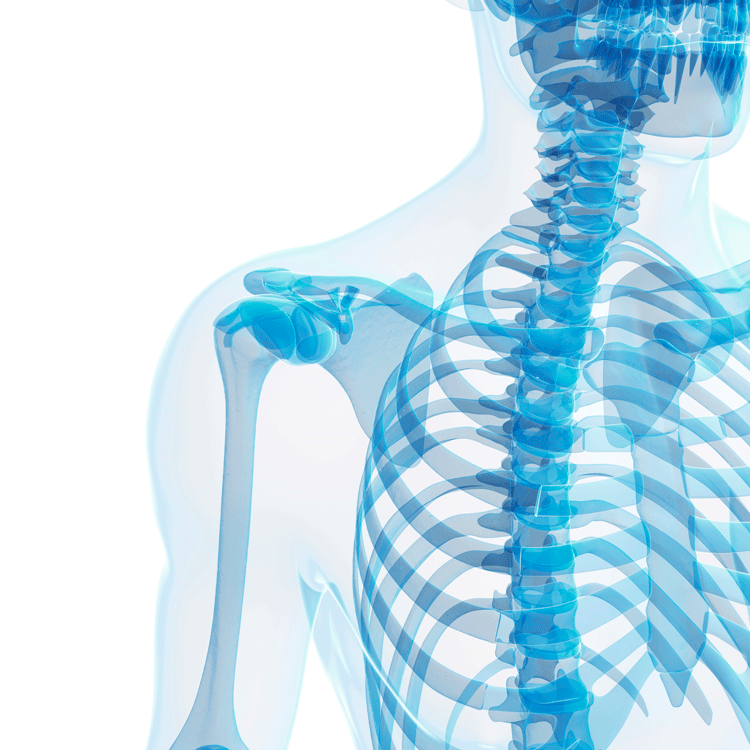What you need to know about bone health
/Osteoporosis and osteopenia (low bone density) currently affects an estimated 55 percent of the population over the age of 50 in the United States.
As of 2010, it was estimated that more than 52 million Americans were affected by the condition, a statistic that is thought to climb to 61 million people by 2020.
Osteoporosis is a disease characterized by an imbalance in bone turnover. I often liken the physiology of osteoporosis to a bank account that has developed a debt. Over the course of a month, it is normal for there to be movement of cash in and out of your account - you deposit your pay check, but also pay bills. At the end of the month, ideally the balance is positive; however, if you spend more than your income, you can develop a deficit.
This situation is analogous to osteoporosis. Your bones are constantly being broken down and rebuilt; however, in osteoporosis there is an imbalance between building new bone and bone loss resulting in thinner fragile bones that are more vulnerable to fractures.
Key to treating the disease is prevention and identification of high-risk patients before fractures occur. The United States Preventive Services Task Force recommends screening for osteoporosis in all women ages 65 and older with a dual-energy X-ray absorptiometry (DXA scan). Last summer, the task force broadened the recommendations to include screening of high- risk women as early as 50 years of age.
The DXA scan is an X-ray that traditionally looks at the bone density of the wrist, hip and spine, in order to determine bone density.
Preventing osteoporosis
Many risk factors for osteoporosis have been studied and well-established. Unfortunately, some of these are out of our control. For instance, having a history of hip fracture in your family puts yourself at an increased risk, as does being white, female or older. Other risk factor can be modified to decrease the likelihood of developing osteoporosis. For more than 20 years, research has demonstrated a strong connection between smoking and ones risk of fractures secondary to thin bones.
The number of cigarettes you smoke is correlated to decreased bone density. Additionally, smokers who develop a fracture, take longer to heal from the injury. Smoking not only affects the bones of the individuals, but research has shown that second-hand smoke during youth and early adulthood may increase the risk of developing osteoporosis later in life. It is possible to reverse the effects of smoking by quitting.
Despite the strong relationship with increasing age and osteoporosis, it should not be considered a normal part of the aging process and there are steps one can take to prevent the disease. The key is to start building your bones while you are young. Bones strength peaks in ones 20s, making it essential to build strong bones while young.
A study published last month in the Journal of Bone and Mineral Researchdemonstrated that physical activity early in life results in stronger bones. The report followed 833 young Swedish men, aged 19 to 24, for 5 years. The authors investigated the effects of physical activity on bone density, finding a strong relationship between routine exercise and peak bone strength.
As we age, exercise can prevent bone loss. The best types of exercise are those that force your bones to work against gravity, or weight-bearing exercise. Examples included walking, running, aerobics, dancing or weight-lifting. I tell my patients to aim for at least 30 minutes of physical activity, 3 to 4 times a week.
A diet rich in calcium and vitamin D are essential for good bone health. For individuals 51 years and older, 1,200 mg of daily calcium is recommended by theInstitute of Medicine. Calcium can be found in dairy products and dark leafy green vegetables, as well as supplements. Vitamin D aids in calcium absorption and bone health. This vitamin is normally made by the body through sunlight exposure, it can also be found in foods such as egg yolks, liver and saltwater fish. Again for those who are unable to get sufficient vitamin D, supplements are a good alternative.
While the majority of individuals benefit from calcium and vitamin D, some have conditions that are adversely impacted by increased calcium, so it's important to discuss new supplements or changes in your diet with a physician.
Bone health affects men, too
In my practice the majority of my patients are male, a population often overlooked when it comes to bone heath. Most people think of osteoporosis as a female disease; however more than 18 million men have low bone density. Furthermore, the American College of Physician notes that the disease is significantly underdiagnosed and undertreated in men. Low testosterone is a major risk factor for osteoporosis specific to male patients. As men age, there is a gradual decline in testosterone; the hormone can decrease by up to 50 percent between the ages of 30 and 60. Symptoms of low testosterone include fatigue, weakness, weight gain, and sexual dysfunction. These symptoms should be discussed with your physician as treatment with androgen supplements can help alleviate these feelings. Notably, the improved testosterone levels can combat bone loss that is often seen with low testosterone.

